Landscapes of a Technological Outside
by Merlina Rañi
This text was produced in the framework of the virtual exhibition Raised by Clones by Estelle Flores, Heaven Computer, Mateo Amaral, Martín Bruce, Nana Schlez, and Pedro Juanna, curated by Merlina Rañi and produced by M○C△.
It took a few decades for humans raised by cloned consoles, pirated software, keys, and cracks to develop their own strategies within the code they shared with their old devices. A language that between memory, error, and fantasy pointed to the location of a virtual world within themselves.
To resort to that place was always easy, even to meet other people there. But it became necessary to produce images that account for the internal displacements it created, of what was processed and appropriated, of how it was enough to spend a little time in the favorite game for that internal place to grow. Returning some of this personal imagery and making it public generates a very specific topology, a spatiality in which it seems possible to project oneself: given the emotional closeness of the players to the aesthetic elements, the space is experienced as a collective unconscious of digital synthesis.
Thus, the metaverse and the MOCA Room in which Raised by Clones is located — this technological outside where it is possible to see art — are also the product of this internal shift. We are allowed to project ourselves with belongingness to this proposed place: a wonderful, delirious, cyber-classical, and inter-baroque building of xenodoric columns, designed by Kirk Finkel (untitledxyz), and capable of supporting the botanical garden of unique specimens that we are about to enter.
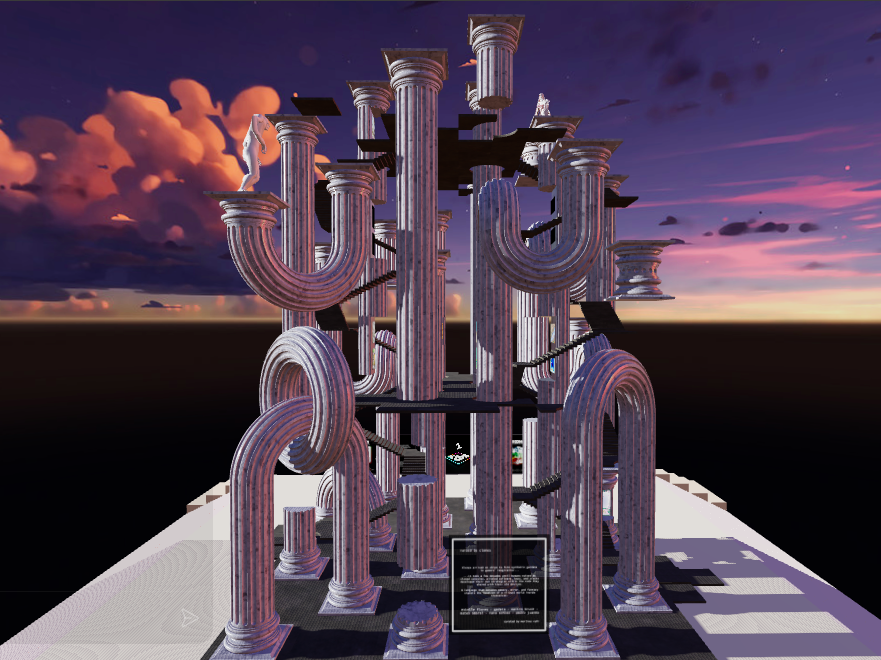
After being greeted by ghosts and passing through a layer of interdimensional plasma, we arrive in a jungle that returns us to intimacy and introspection, an inner world with its own landscapes; it even has its own biota, and above all, a particular form of representation.
It is no coincidence that ghosts haunt the construction. Godmin’s Ghosts are creatures from the generativity and contingency of the HeavenComputer system: memory packages that in their recursive action show the deformity that moves them away from the human look and reveals their divinity. Godmin is inspired by the supernatural historically attributed to the malfunctioning of technology, the relationship between error, esoteric suspicion, and empirical discovery.
This Brazilian artist is a self-taught developer who learned to program at the age of ten in Geocities and Angelfire to showcase her creations, PixelDollz. In 2019 she began to instruct herself in Web3 and Solidity (a programming language used to implement smart contracts on the blockchain). This served as a basis to develop, during 2020, a huge and beautiful engineering work that a year and a half later came out under the name HeavenComputer. Ghosts represent the first series of works hosted within this project, and consist of a generative system, which when queried (requested and minted) results in an NFT and unique artwork. Each Ghost varies in its characteristics as the inhabitants of an open-world game, and also in its different ways of expressing glitches.
While this artist spent her young years playing Final Fantasy and Legend of Zelda, the Ghosts are inspired by the general atmosphere of the 3D models of the 2000s. These ghosts do not refer to any particular game or technology, they work as a study of errors in a three-dimensional simulation. The focus is on the representation of the rudimentary, the idea that the perfect lacks magic and leaves no room for imagination, an idea that several artists share in the exhibition. There are also memories linked to a particular technology that marks the era. For example, having Windows 95 in 2002, when there were already several “evolutions” of that OS, which basically means growing up seeing glitches. All this converges in the concept of decentralization that can be depicted in the mutability proposed in the artwork.
In the words of its creator, the Ghost query system “(…) reveals not a real spiritual world, but an unreal material world.” And, “a glitch, much like a ghost, parasitically uses a system as a conduit for the delivery of unexpected wisdom, therefore it makes for the perfect divination device.”
In the exhibition, Godmin’s ghosts appear as a threshold from which one can possibly start their journey. They are also sporadically arranged according to the architecture.

In the same memory channel, Nana Schlez’s works result from abstracting the figuration of memory, sometimes her own and occasionally collective, to create a new space where nothing existed before, or to fill that space that exists thanks to the artwork. She uses images from the Internet that coexist in a two-dimensional space free of physics, entropy, or linearity.
Between the textures, palettes, and planes of her compositions, one can smell very diverse influences coming from Italian design from the 80s, or the Post-Internet and Vapor Wave. But this artist, who admits to having watched too much Cartoon Network, says: “ (…) What always interested me about the video games of my childhood is that they did not pretend to be a real scenario, it was a fantasy that you could get into and get out of. The same thing happens to me while I am doing art: I’m not interested in making a completely realistic 3D image, or that it looks truthful. When I create, I feel that I’m making small frames of something much bigger, as if we only see a cutout of that dreamlike landscape.”
Her image of the technological outside could be found in Wonderboy and Mario Bros; however, these virtual spaces were proposed in such a natural way in Nana’s imagination that she doesn’t directly reference them, and instead she shares the electric code and the preference for fantasy. In her artworks, there is also a technical phantom that does not figure but that can be tuned. It has a medial logic.
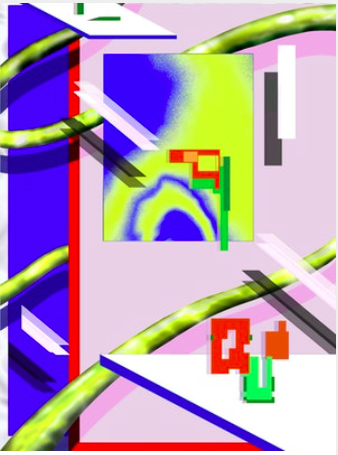
After having passed through the plasma frequency of Nana’s artworks, we find an atmosphere charged with subjectivity and intimacy proposed by the art pieces of Estelle Flores. Due to the influence of cinematographic language, her works carry photographic poetics that bring together experiences of very different natures. This has to do with a very elaborated process that mixes the subjective framing with the synthetic scene through which Estelle points to the elements capable of constructing a narrative.
Unlike most of the artists in the exhibition, she spends a lot of time playing video games nowadays, both for the mere joy they provide, and because part of her artistic process takes place within the game. At the same time, her earliest link to video games came about through a desire to play as well as the mystery behind the content of video games, since her encounter with consoles was only possible at her friends’ houses, and in advertisements on TV or in magazines. This detail reveals a lot about her work; about the external, strange, and romanticized look she proposes.
Her artworks come from an exercise of playing Sims 4 every day, which Estelle estimates took a total of 450 hours of gameplay. Estelle’s sims painted pictures through the native “Paint based on reference” tool (the reference being a photo taken in-game). The resulting images constitute the Contain Real Ingredients series, which in turn, was used as a dataset to train a Stable Diffusion artificial intelligence model, aiming to replicate the images until they were established as a painting style. The selection of these results exhibited in the show is titled New World Wonders and is the first series of artworks by the artist minted on the Ethereum network.
Thinking about this elaborate process, the artist tells us: “One of the things that strikes me about these images is how far they are from the human or the natural. They are a copy of a copy, which increasingly prints more noise. I explored this aspect supported by different readings, to place the works in a dystopian context, in the future that we are already used to in this moment of political and economic tensions; the future locked behind paywalls and other closed gates, and the fact that these images could be used as disclosure for a larger product. This last element refers back to my childhood experience of imagining the content of a certain game, and creating a relationship of desire instigated by mystery, from just a few disclosure images.”

Estelle’s works share their visual space with Pedro Juanna’s works, and they also share a visual code: the evocation of natural elements, and of course, the mixing of personal experiences with video games. While in Estelle’s artworks the look is intimate and introspective, in Pedro’s pieces the taste for landscapes reigns. Inspired by the strong influence of Mexican landscape painters (such as José María Velasco, Raúl Anguiano, Nicolás Moreno, Dr. Atl, or Joaquín Clausell), Pedro’s works connect the aesthetics of an era — given according to the devices he frequented — and the experiences lived throughout his childhood, a time when he knew the diversity of geography and the bioclimates of his country.
In the artist’s words: “My creative process is based entirely on memory; recalling landscapes, places I have visited, events that have moved me. From memory, I reimagine under different digital techniques. Much of my work is created in order to recover or reincarnate a digital nostalgia that I seek from the digital constructions of my childhood, both video game consoles, as well as the Internet of the 90s and early 2000s that I visited. The pixel of that era has an extremely attractive and delicate quality, and little by little, we have eliminated these graphics in search of the perfect HD.”
Born in Mexico City, Pedro’s childhood was influenced by the consumption of video games, with almost equal access to original and cloned products. Thus, his travels around Mexico are crossed by Sonic Adventure 2 circuits: like a chipped Play Station, memories define their resolution in a number of pixels.
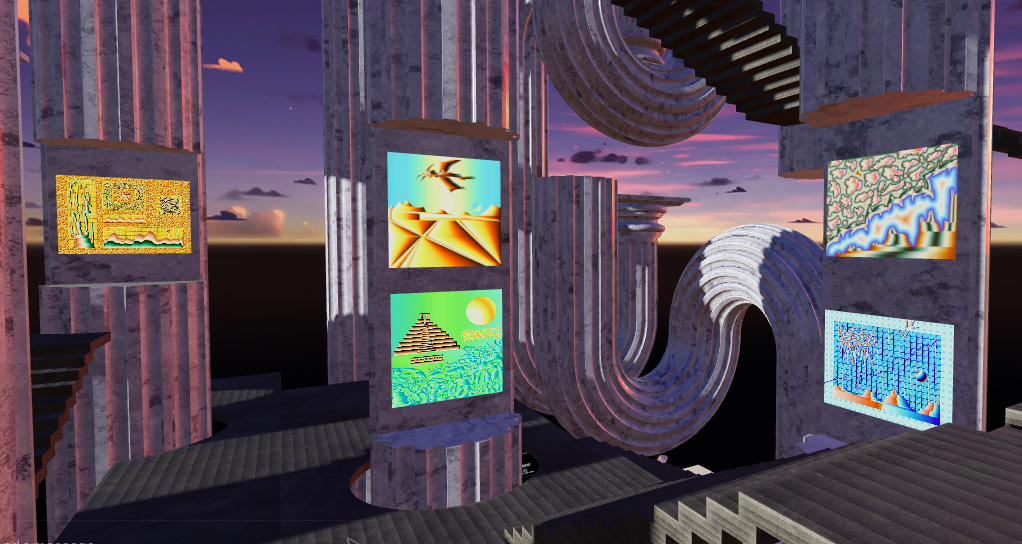
Furthering our journey in Raised by Clones, we find the works by Martín Bruce and Mateo Amaral, in which video games take very dissimilar perspectives in their creative processes. In Martín Bruce’s case, there is a strong interest in the representation assets used in different historical games, as well as images from the Internet that he has been collecting for more than fifteen years that have a certain collagist logic. Martín is a painter and a musician, and what he most remembers from some of his favorite games — such as Prince of Persia — is an artistic delight. For him, the narrative has to do with the abstract sense of the game — rules, objectives, restrictions, and powers — although he was interested in enjoying the graphics, the textures, and the chromatic and harmonic compositions.
His work establishes a dialogue between painting and the digital image and seeks material transfers within these two languages. He highlights the pictorial sense of digital images and translates electronic voids into the gestures typical of a paintbrush. “In this sense, in both processes, the digital and the analogical, affinities are found by taking the pictorial and the digital as imaginaries in themselves, which transcend their formal connotation. By transcending their condition, I seek to make appear illusory scenarios that tend to be infinite. A translation made by movements of distancing and return, of inflection, that dismantles the real planes in a pictorial depth, turning the computer screen into a space of the irradiation of forms,” Martín describes his process.
“I extract images from the Internet, then I expose them multiplied, threatened, distorted, among different extensions and variations transitive to the creation of discrete utopias.” This denotes a characteristic of his work, which in folding and unfolding generates many variations of one idea as a wrinkled surface, capable of inscribing many versions of the same thing. Although Martín did not have much to do with clones — probably because of the kind of market that was established in Chile during his childhood — he was able to absorb some of their legacies through their effect on Internet imagery, and the result is a soft and frothy baroque that provokes warmth and stimulates the imagination.
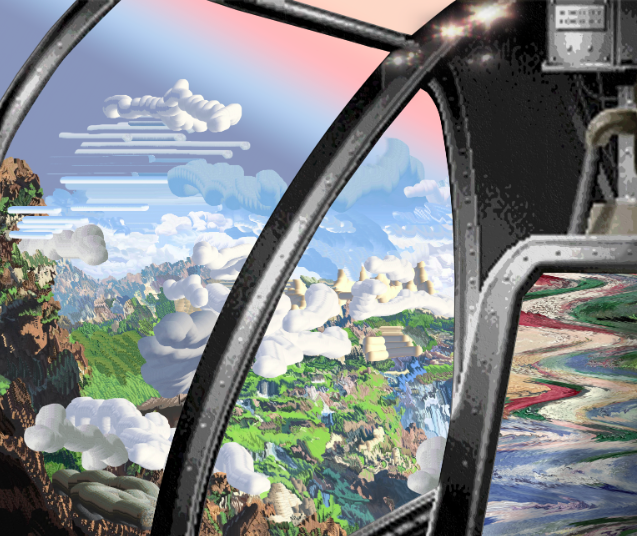
Meanwhile, in Mateo Amaral’s work video games enter through their structural construction as well as through their narrative scope. At first glance, his practice of editing by cuts refers to the language of cinema: one of his most fundamental explorations is to transcend the linearity of this language and to be able to express it with abstraction. In the artworks from the Éramos Humanos series, Mateo uses a video game engine that arranges a series of elements and characters with interactions mediated by algorithms that were trained through machine learning techniques. Mateo, commenting on the creative process in which he generates his pieces, says: “For that, I review drawings and ideas that I’ve been accumulating in notebooks since 2005, and I model them in 3D and animate them to introduce them to that world. I work in a similar way with sound. Many times I improvise with samplers or synthesizers and keep what I produce in a sample library. In this library coexist freshly cooked sounds with sounds that I made in 2002 from the total ignorance of the tools I had at that time. I find this way of working also very related to the way of working in video game production, which is based on having a library of assets, which can be 3D models, sounds, or textures. These assets are recycled in different ways throughout the game.”

Unlike other works in the exhibition — which avoid three-dimensionality or any allusion to reality — Mateo’s work presents three-dimensional elements that also evoke pure fantasy. The image treatment contains glows and gradients that emulate the technical limitations of the past. Anyway, something in the materiality and movements brings their corporeality closer to Play-Doh than to flesh. His influences are processed, assimilated, and combined, however, the cloned aspect affects his work in the very structure of its language.
In his environment, living with clones was so natural that you could say he lived in a world of 100% piracy, cracks, and forged keys. The video game in which he spent the most hours, Another World, required a system of keys in the form of ancestral or alien hieroglyphs, that allowed players to survive and delve into one of the best plots that existed in the industry.
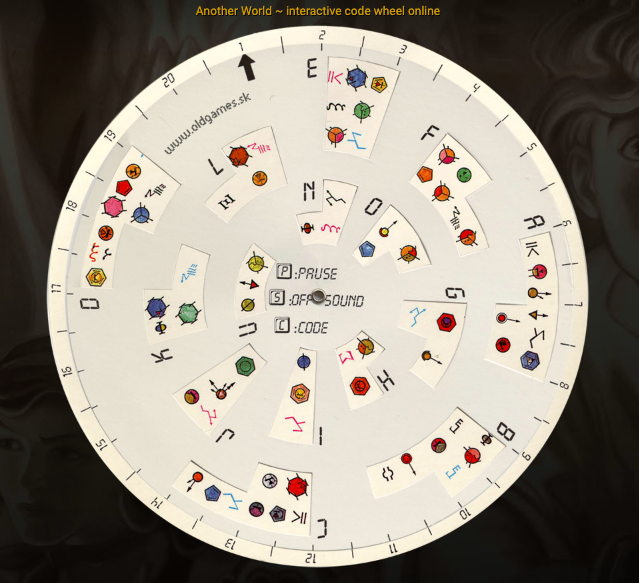
Although each artist presents a different relationship to clones — related to the clones’ influence on creative sensibility — most of them think the consumption of piracy was fundamental to their creative growth, stating this importance was due to economic issues or because the informal market represented the only possible source of access. As information began to circulate more fluently, commercial strategies also changed and became more accessible, so pirate consumption decreased. At the same time, some think that as soon as these tools became profitable for work, they opted for original products in order to guarantee security and quality.
However, we won’t stop giving merit and thanking the clones, who taught us how to lose or appropriate time. In the end, all these video games offered us a ritual to link us to what is nowadays known as virtual reality.
Open AI’s text-davinci-002 comments relate to this: “The uncontrolled copying of the console, and its function as a reproduction tool, speak of these beings that inhabit a network in a permanent state of cloning. A society of individuals inhabiting a virtual world and a real world in which the body is transformed into a console.”
We encourage and invite you to visit the Raised by Clones exhibition if you have not already.